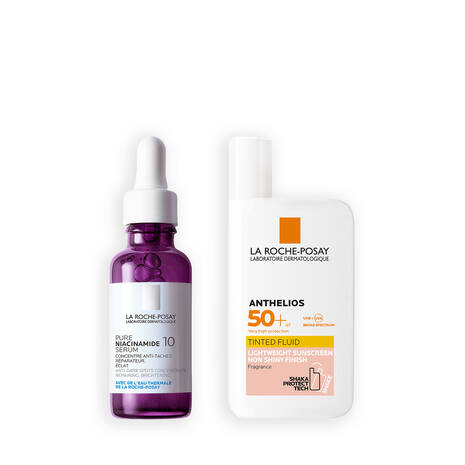
- POPSUGAR Australia
- Beauty
- This Summer, We’re Stopping Dark Spots Before They Appear
This Summer, We’re Stopping Dark Spots Before They Appear


We’ve partnered with La Roche Posay to answer all your questions about skincare, what ingredients will work best together, and how to protect your skin over the summer.
Have you met our good friend, dark spots?
Dark spots like to make friends with just about anyone and don’t mind how old you are or your skin tone. In fact, the number of new friends they’ve made is on the rise thanks to environmental factors like pollution, sun damage, and listening to way too much Lizzo. They seem to appear out of nowhere across the skin on our bodies and usually overstay their welcome.
Well, we think it’s time to call it quits with this one-sided friendship and say fare thee well to dark spots. Here’s our breakup guide for dark spots and making friends with brighter-looking skin instead.
What Are Dark Spots?
Dark spots, also known as hyperpigmentation, are darker patches of skin that can occur on your face and body and can be caused by several factors. Dark spots show up as brown or darker patches of colour that stick out against the surrounding area of your skin
There are many different types of dark spots: age spots, freckles, melasma (a form of hyperpigmentation that affects women during pregnancy) and post-inflammatory hyperpigmentation (a type of scarring).
Causes of Dark Spots
There are a couple of invitations dark spots will RSVP to join your skin party, and these include:
Sun damage
Also answering to the name sunspots or solar lentigines people can develop dark spots after sun exposure. The face, hands, and arms are most likely to develop sunspots as they typically receive the highest levels of sun exposure.
Your hormones
Like pregnant women don’t have enough to deal with (getting up to pee in the middle of the night four times and heartburn to name just two of a long list!), hormonal changes during pregnancy can also trigger melasma.
Melasma is a skin condition that results in small patches of skin discolouration and we have an excess of estrogen and progesterone to thank for this.
Medication
Certain medications can increase skin pigmentation and lead to dark spots.
Inflammation
Dark spots can develop after a bout of inflammation on the skin. Inflammation may occur for various reasons that include acne, eczema or injury to the skin.
Wound healing
Dark spots may remain after an insect bite, burn, or cut heals, however, these may fade with time.
How to Prevent Dark Spots
Dark spots are common and can be protected against using two simple products: sunscreen and serum.
Sunscreen is your best defense against dark spots caused by sun exposure and with the Cancer Australia predicting Melanoma of the skin will jump up a spot from the fourth most diagnosed cancer in 2018 to the third in 2022, it’s a good idea to add this to your skincare routine every day. To prevent the appearance of new dark spots from sun exposure in the future, apply a broad-spectrum sunscreen with an SPF of 30 or higher every morning before you go outside.
If you already have sun-induced dark spots on your face don’t fret, La Roche Posay’s Pure Niacinamide 10 Serum For Dark Spots might just be your new bestie.
This serum with niacinamide, and hyaluronic acid helps to even out skin tone, hydrate and brighten while improving the appearance of dark spots and is specifically formulated for sensitive skin types. The powerful dermatologically tested formula contains 10% niacinamide (hydrate and smooth), and 5% HEPES (gently exfoliates) to help skin look brighter and smoother while the hyaluronic acid helps to lock in moisture leaving skin looking plump and healthy.
Looking for a winning combo of sunscreen and Niacinamide serum? Today’s your lucky day with La Roche Posay’s Anti-Pigmentation skincare kit.


